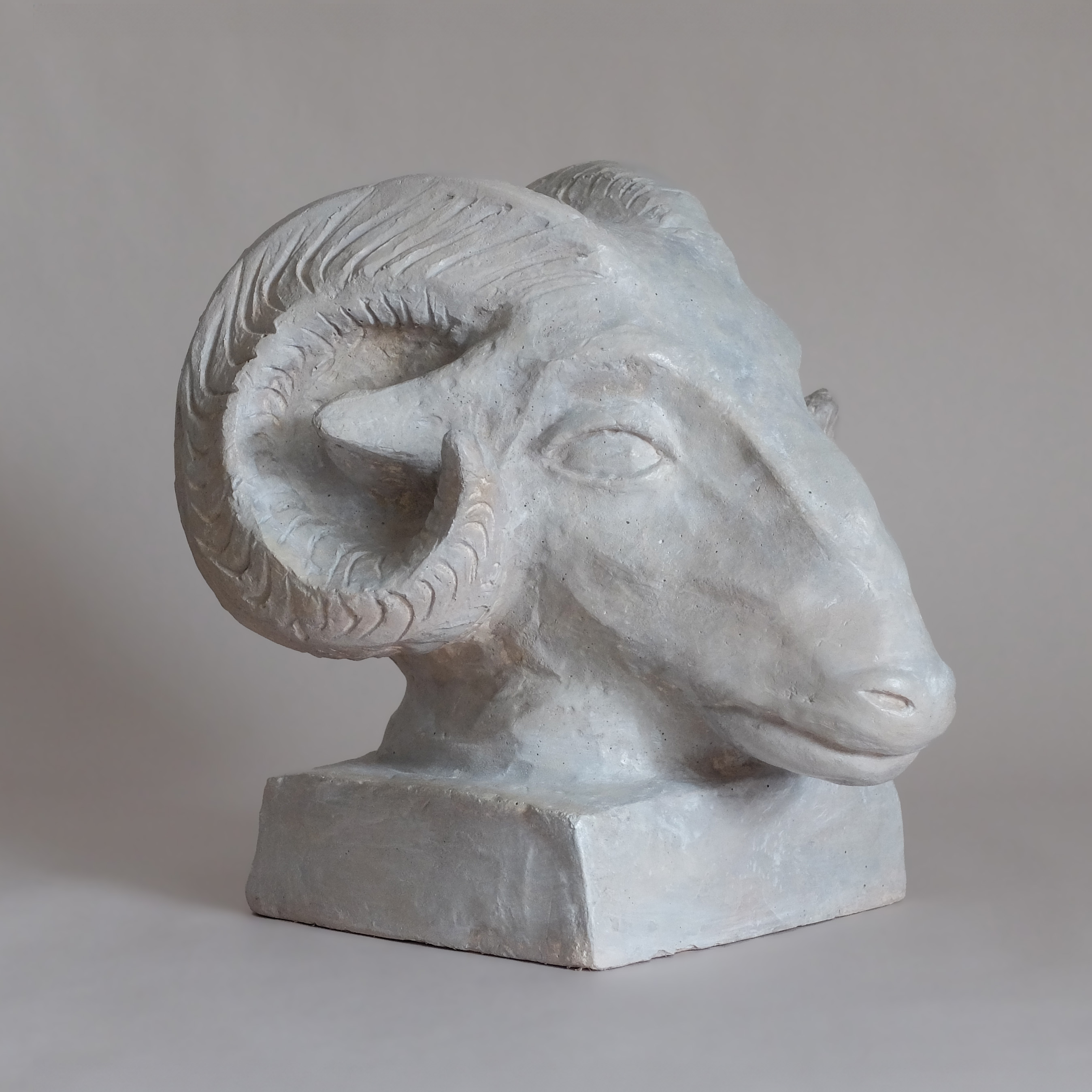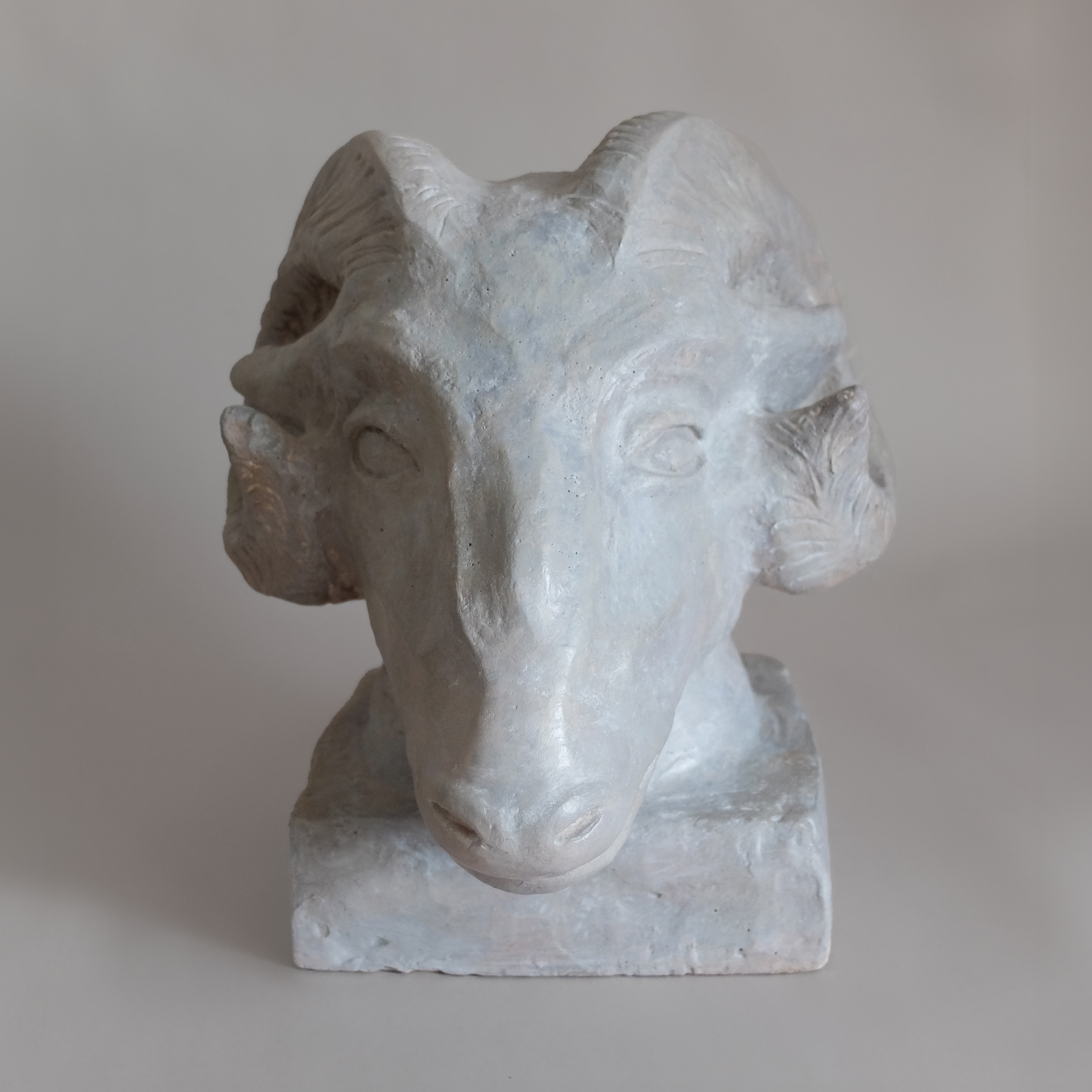Ram God
Plaster, shellac, oxides
2024


Alluding to classic sculpture, a ghost-stone ram head stands on a small plinth. The soft gaze from a structured face offers a god-like aura while protective horns curl outward in an organic, sea-shell spiral, showing the strength, fertility, and protection traditionally seen within the ram.
Formed in clay and cast in plaster, the traditional European sculptural style imparts a heroic and divine quality to the ram and references the sheep’s lineage and introduction to Australia.
In our Australian context, the ram is a conversation rather than a symbol. The environment, our colonial and settler history, pastoralism, genetic breeding, ethics, and animal welfare are central to this dialogue. In Australia, there are approximately 78.75 million sheep. This complex ecology plays a significant role in Australian culture, but we often overlook the gaze or soul of the animal, which is frequently viewed merely as a product. 'Ram God' serves as a reminder of the rural hierarchies, relationships, and perspectives that we maintain with this domestic creature, as well as the wider, more-than-human world.
Formed in clay and cast in plaster, the traditional European sculptural style imparts a heroic and divine quality to the ram and references the sheep’s lineage and introduction to Australia.
In our Australian context, the ram is a conversation rather than a symbol. The environment, our colonial and settler history, pastoralism, genetic breeding, ethics, and animal welfare are central to this dialogue. In Australia, there are approximately 78.75 million sheep. This complex ecology plays a significant role in Australian culture, but we often overlook the gaze or soul of the animal, which is frequently viewed merely as a product. 'Ram God' serves as a reminder of the rural hierarchies, relationships, and perspectives that we maintain with this domestic creature, as well as the wider, more-than-human world.